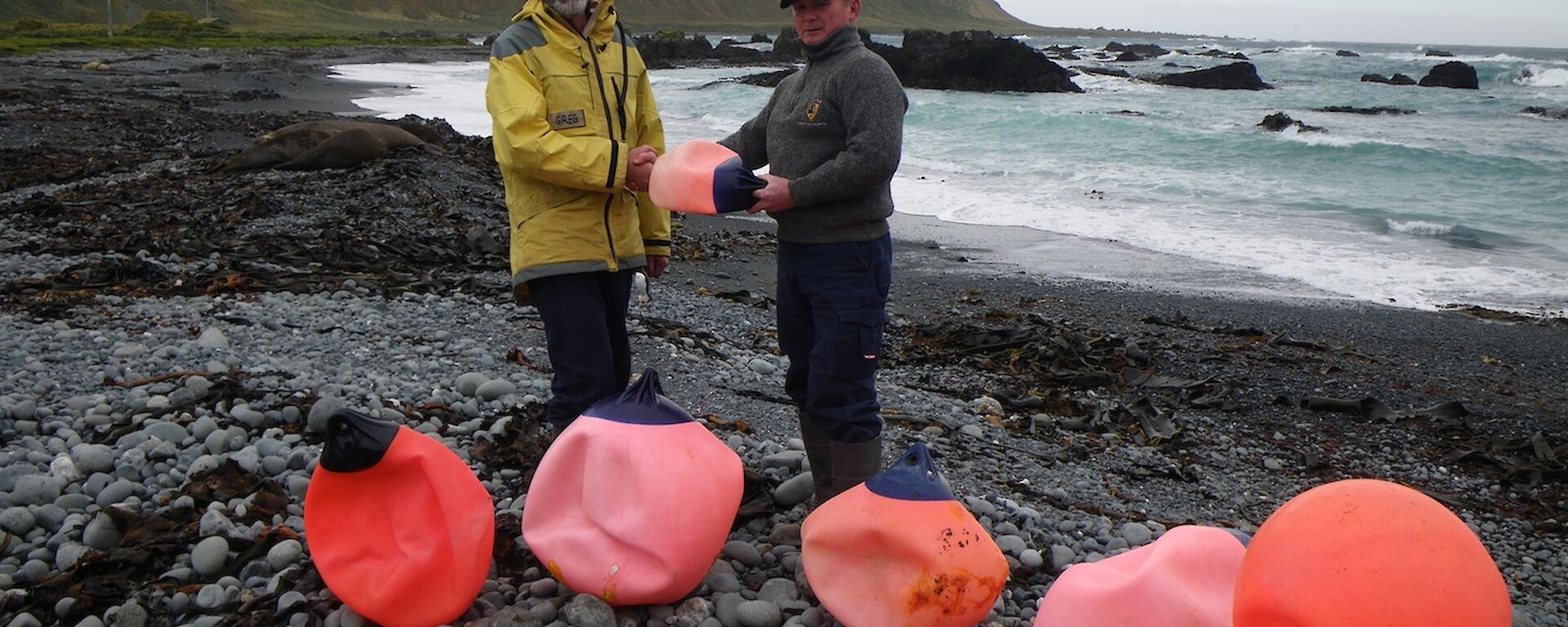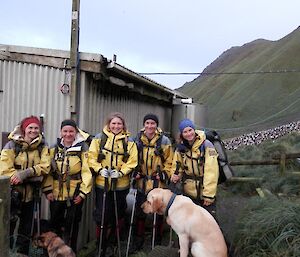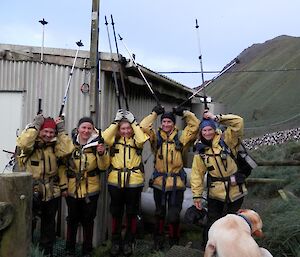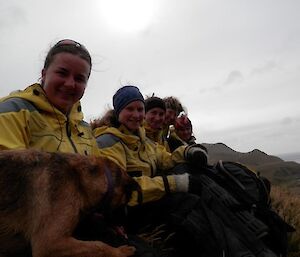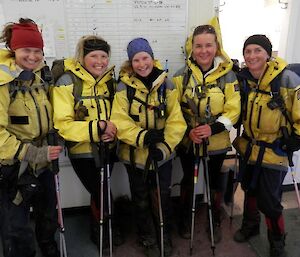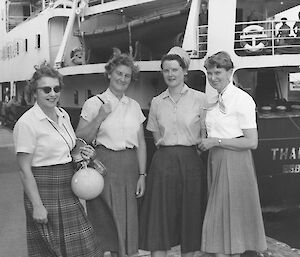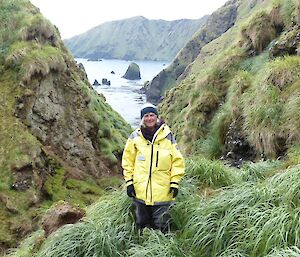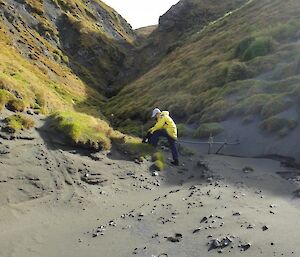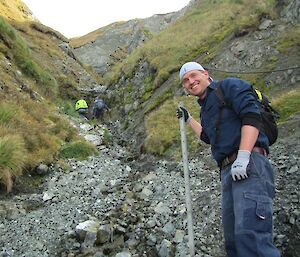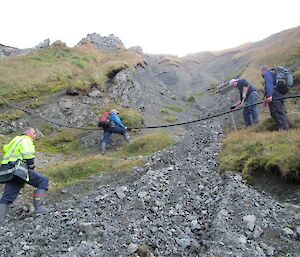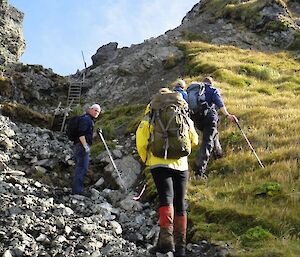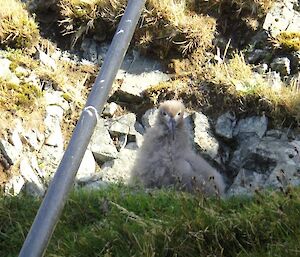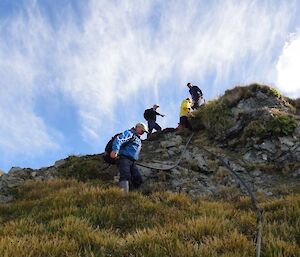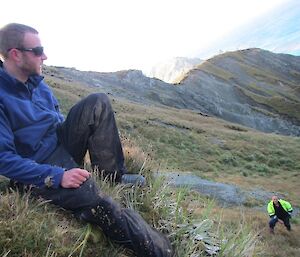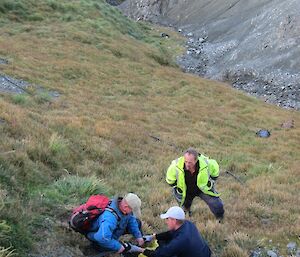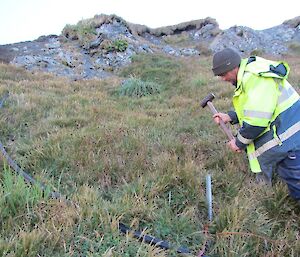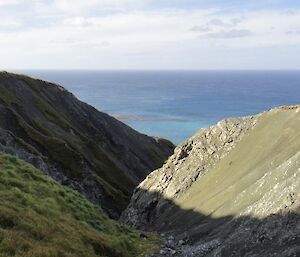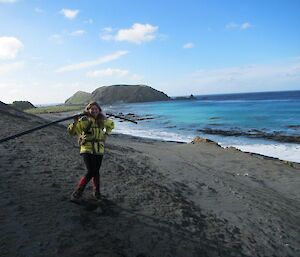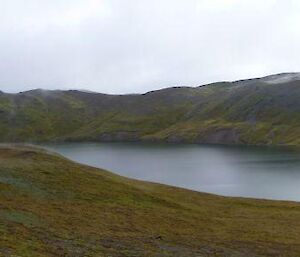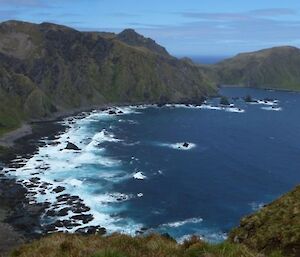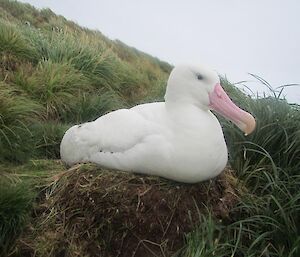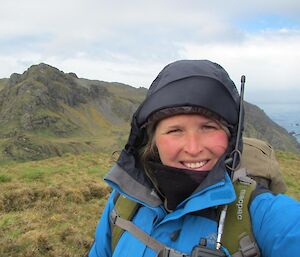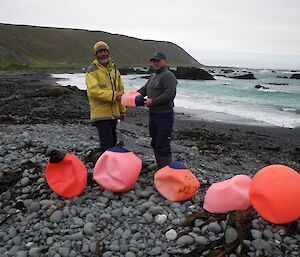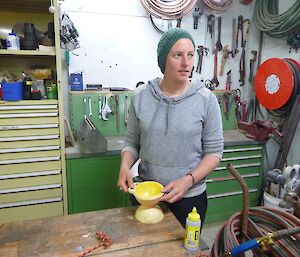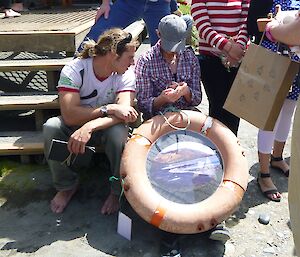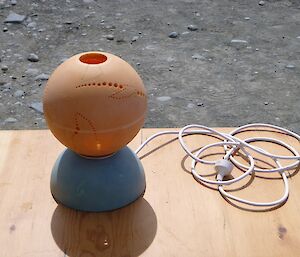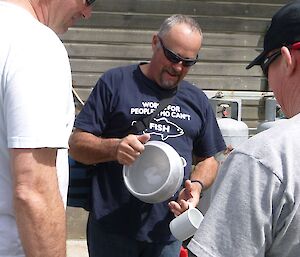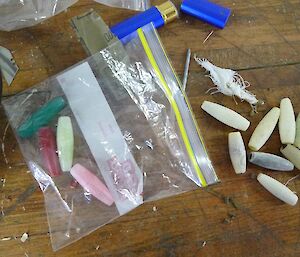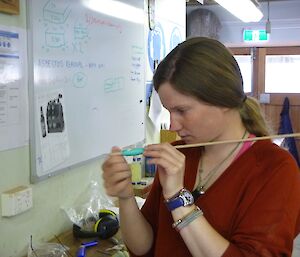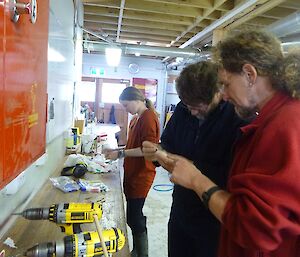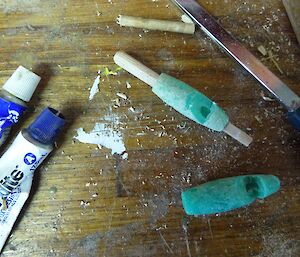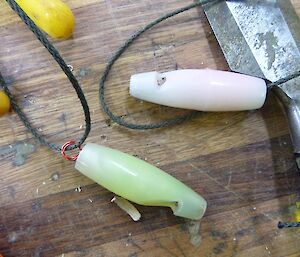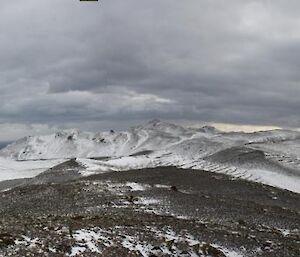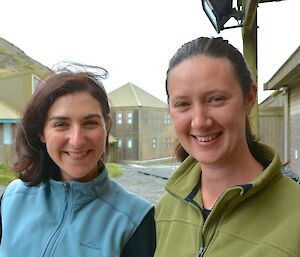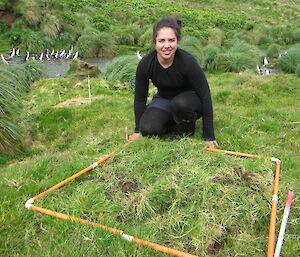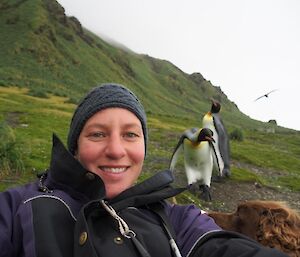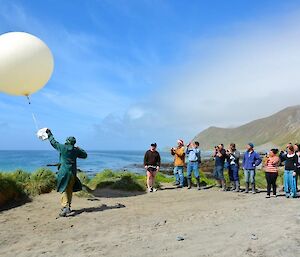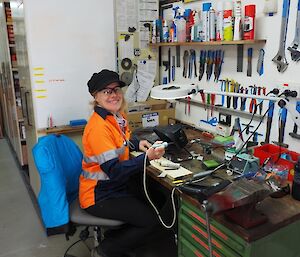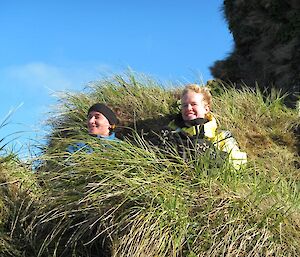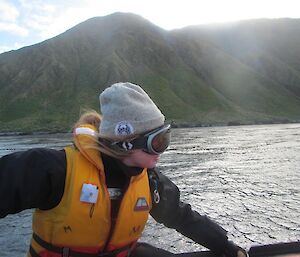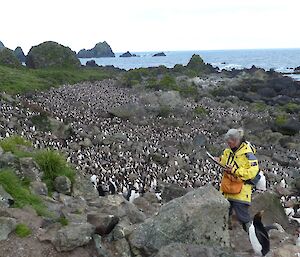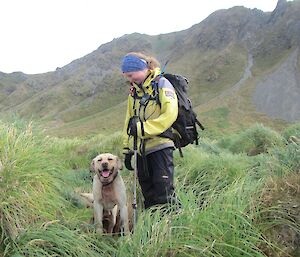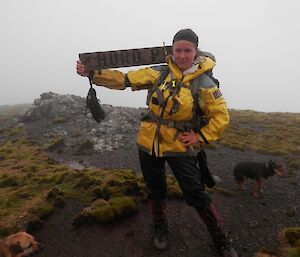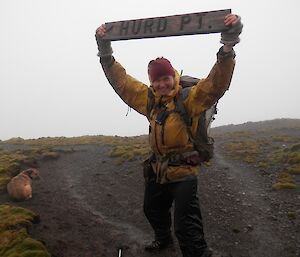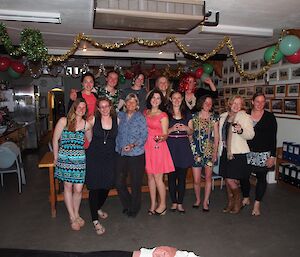As we all prepare for the arrival of the L’Astrolabe and the chaos of resupply many of us are saying our last goodbyes to this special island. Last week five Macca expeditioners — Angela and Leona (MIPEP rodent hunters), Kate and I (albatross researchers) and Karen (MIPEP senior dog handler) — enjoyed our last night in the field at Hurd Point, celebrating by having one last hut party. We arose at 0500 the next morning and began the 35 km trek back to station. With clear weather, we had spectacular views of the island from the plateau. It was a great way to finish a successful season, tramping down the island together as a group of five women and four dogs, laughing constantly along the way.
Walking the length of the island in a day is no easy feat. Initially, you have a huge climb to get up off the coast onto the plateau. Plateau trekking is pretty straightforward, until you reach sections of the track like Windy Ridge, where the wind funnels up from the west coast and can often reach well over 50 knots. Dropping down into Green Gorge you get a beautiful view across the basin with the sun beaming off the escarpment. However, there are no dry feet as you squelch your way across the tarn below. The last challenge when heading north is Doctors Track, leading down into station. For tired knees, going downhill can be a real struggle, especially on this muddy, steep track. As we descended closer to hot showers, a chef prepared meal and a drink at the bar, I wondered how often throughout history had a group of five women walked the subantarctic terrain of Macquarie Island.
The first women working on Macquarie Island were biologists Susan Ingham, Isobel Bennett, Hope Mackenzie and Mary Gillham arriving on the Danish Polar vessel the Thala Dan for resupply in 1959. They were warned that on their ”behaviour rested the future of our sex with regard to ANARE voyages”. Despite this, these four pioneers set the way with women being present on most resupply voyages to Macquarie Island. However, it was not until 1976 that a woman by the name of Zoe Gardner over-wintered on Macquarie Island as the doctor on station.
Nowadays things are pretty different here with thirteen women currently working and living, filling roles as hunters in the MIPEP team, as scientists and as Bureau of Meteorology staff. However, we are still surprised at the response we get from some of the older visiting tourists, who are astonished to see so many women working on the island and even more startled to find out most of them are hunters.
Jaimie Cleeland
When I first came to Macquarie Island as a summer scientist in 1979–80 it was still fairly unusual for women to be working and living on the island. Jeannie Ledingham had wintered as the doctor a year or so after Zoe Gardner, and was about to over-winter again in 1980, and there had been a few other female expeditioners as well. Liz Hynes was also wintering in 1980 as a radio operator, and Patricia Selkirk was summering as a scientist, and there was me. Before leaving for the island on the Nella Dan, I was surprised to get a phonecall from the Director of the Antarctic Division. “Aagh”, I thought, “What’s happened?”. However, he explained in a rather roundabout and embarrassed fashion that it was possible I might have to share a cabin with males on the voyage south, and field huts with men on the island, and could I cope? I was much relieved, although thankfully didn’t laugh. Having spent years bushwalking and sharing huts and tents with males, it was absolutely not an issue for me, and wouldn’t have been for any of my bushwalking friends. He took a bit of convincing, but thankfully finally believed me.
Yes, things have changed hugely since that time following a few years of having to endure anti-female sentiment from male expeditioners who believed women had no place down south. It seems quite incredible now. At the time, I remember thinking, Macquarie Island is the kind of environment where I feel most comfortable and at home. How on earth do I ”…not belong here”? Any woman who loved outdoor life and living in remote areas would have felt the same.
Now, women are just as actively involved in Macquarie Island expedition life as men, and this has been the case for many years. From my perspective, it is wonderful (although somewhat frustrating) to be able to show some of the older tourists visiting the island that this is the case, and that it’s quite normal — although I must admit that the group of young women hunters and scientists who I've spent this summer season with, are a particularly spectacular lot!
Jenny Scott

